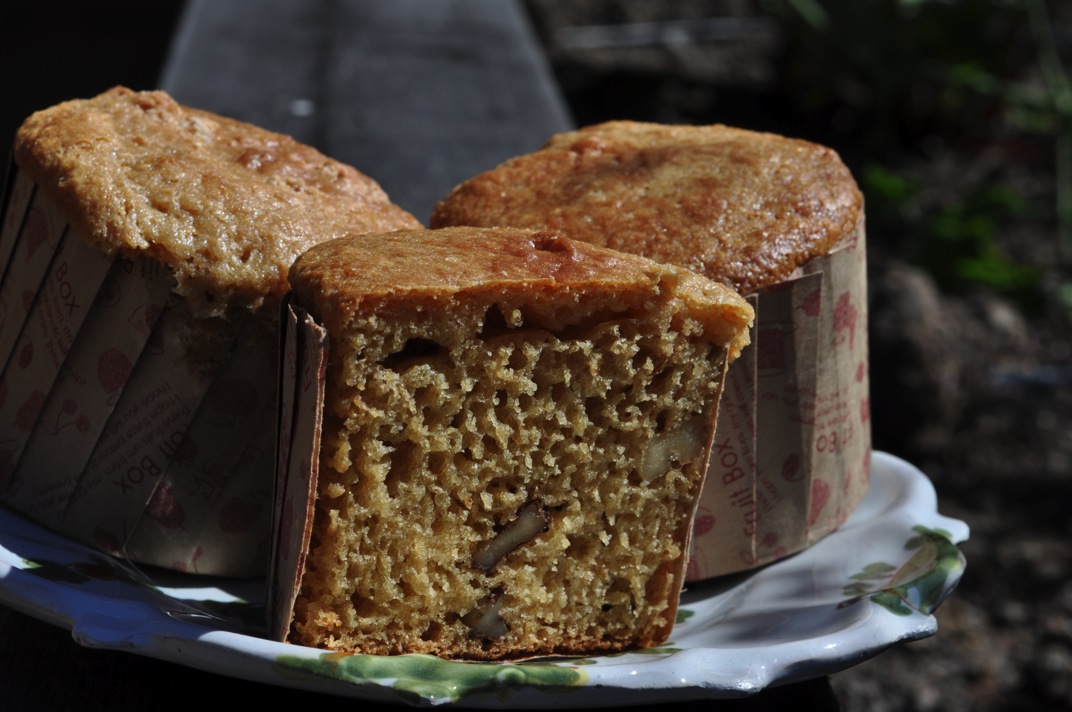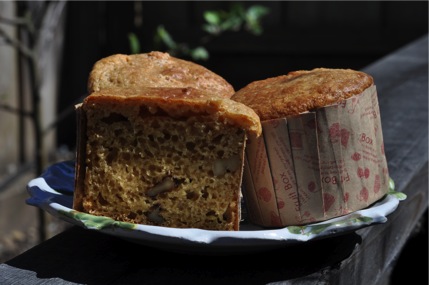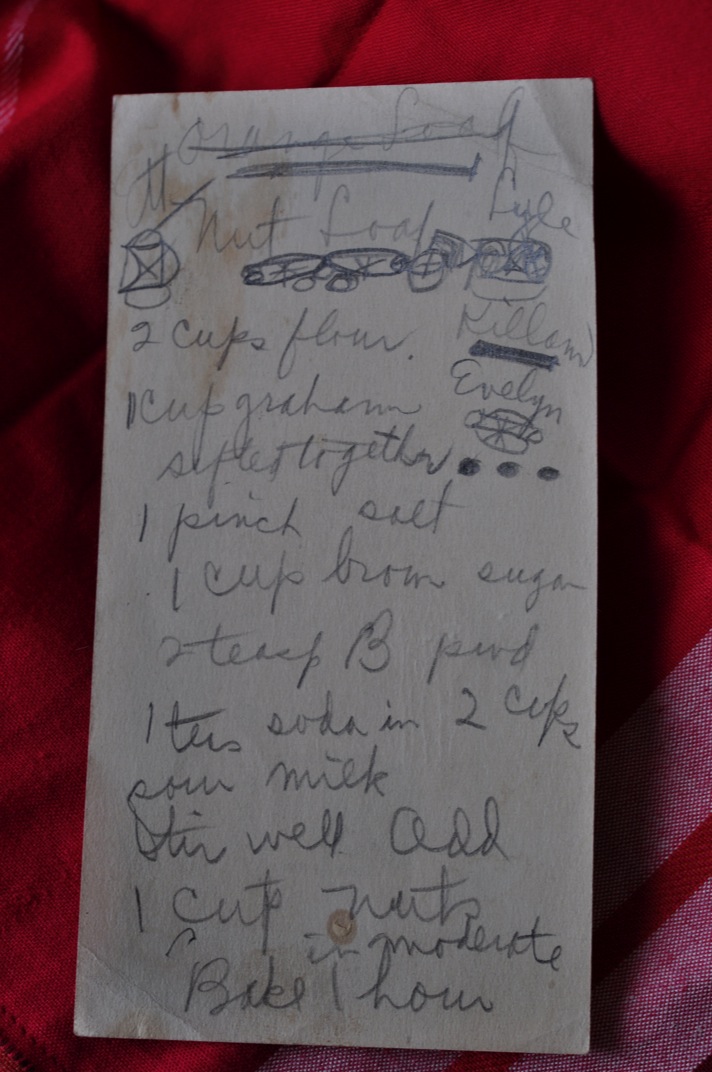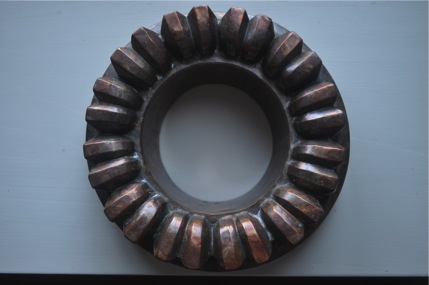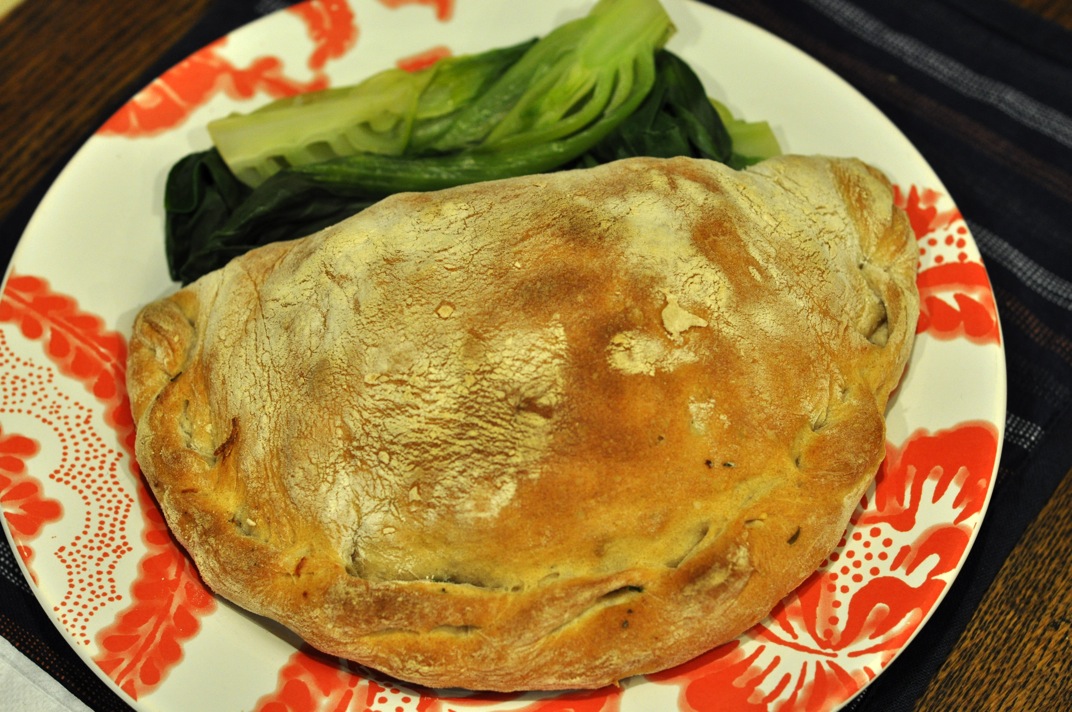
My new special celebration dinner: I just found out that I got an internship at a museum!
Lee laughed when I told him what this recipe calls for. “ Three kinds of cheese and prosciutto.†I said. I should have known he’d find that funny. You see, Lee doesn’t eat cheese and I don’t eat meat. Why did I choose to make a recipe from my grandmother’s file that calls for both?
1) I wanted to make something savory rather than sweet.
2) The calzones sounded delicious
3) How could I resist Alice Waters?
4) I thought I could easily adapt the recipe to our diets while remaining faithful to it’s flavors.
See, I’m not so crazy. I also think I succeeded in accomplishing #4, although it took some thought. I replaced most of the cheese with chopped, roasted cauliflower, adding some veggie cheese to the filling for Lee’s calzone and goat’s milk ricotta salata to mine. The cauliflower made up the bulk of the filling and it’s earthy flavor blended beautifully with all the fresh herbs called for in the original recipe. I guess you could say I replaced the prosciutto with roasted red peppers, mostly for color.
As a baker, the crust was definitely the most exciting part of this recipe for me. I resisted the temptation to mess with it, using all-purpose flour as called for rather than substituting some whole wheat pastry for some of it. The dough began with a rye flour sponge, a technique I’ve never used for pizza crust before. The dough was so, so silky and light! It was incredibly easy to worth with and crisped up beautifully around the calzone filling. Best of all, it did not tear on the chunk cauliflower as I feared it might. This could become my go-to pizza crust!
I made two calzones – or calzoni, as Water’s calls them – a slightly larger one for Lee and smaller one for myself. They were perfect for a special dinner without making us feel stuffed. I’m sure the cheese-filled originals would be outstandingly delicious and much richer.
Why did my grandmother tear this recipe out of The Denver Post’s Sunday Empire magazine? My guess is that she was drawn to the novelty of calzones and the renowned Alice Waters of Chez Panisse, a restaurant she visited in Berkeley while my dad was at school there in the 70’s. Helen liked to make new and different things and these would have been right up her ally.
I wonder if she ever made them, or if the clipping sat in her file all these years without her getting a taste of Chez Panisse Calzone?

Chez Panisse Calzone
from Pasta, Pizza & Calzones by Alice Waters, reprinted in The Denver Post Sunday Empire magazine
(Filling)
2 oz fresh California goat cheese, crumbled
2 oz French goat cheese, such as Bucheron or Lezay, crumbled
7 oz mozzarella, grated
2 slices prosciutto, cut about twice as thick as you would for a sandwich or salad, then into a julienne
2 tablespoons fresh, finely cut chives
2 tablespoons fresh, minced parsley
1 sprig fresh thyme, chopped
1 sprig fresh marjoram, chopped
2 small cloves garlic, minced
Coarsely ground black pepper, to taste
Blend all ingredients together in a large bowl.
(Dough)
Lukewarm water
2 teaspoons active dry yeast
1/4 cup rye flour
1 tablespoon milk
2 tablespoons olive oil
1/2 teaspoon salt
1 3/4 cups unbleached all-purpose flour
Make a sponge by mixing together 1/4 cup lukewarm water, yeast, and rye flour. Let it rise 20-30 minutes.
With a wooden spoon, mix together 1/2 cup lukewarm water, milk, olive oil, salt, and all-purpose flour. Add to sponge.
Knead dough on a floured board, adding flour to the board as needed but no more than necessary.
The dough will be light and a little sticky. A soft, light dough makes a light and very crispy crust.
Knead for 10-15 minutes to develop strength and elasticity.
Put dough in a bowl rubbed with olive oil and oil the surface of the dough to prevent a crust from forming.
Cover with a towel and put in a warm place to rise for about 1 hour, or until the dough has doubled in size.
Punch the dough down and let it rise for another 40 minutes.
Place a baking stone, if you have one, in your oven and preheat to 450 degrees F.
On a floured board, roll dough into 1 circle, about 14 inches in diameter, or divide into 2 or 3 circles for small calzoni.
Have the filling ready, at room temperature, and work quickly putting it on half of the dough circle(s).
Moisten the edges with water and fold dough over filling. Fold the dough at the end up onto itself, pinching it together.
Transfer calzones to a heavily floured pizza peel, the back of a baking sheet, or a sheet or parchment paper.
Slide calzones quickly into a preheated, 450 degree oven with a baking stone on a rack close to the bottom.
Bake 15-18 minutes or until brown and crisp.
Remove from oven, brush calzone tops with olive oil, and serve.
My notes and changes: Instead of most of the cheese, I used 1 medium-sized head of cauliflower, roasted at 400 degrees for about half an hour, and then chopped. The soft goat’s milk ricotta salata I used in addition was just what I had on hand and it was delicious! (1/4 cup or so for my calzone) I was able to cut down on the rising times for the dough since I was running short on time. I gave the first rise about 45 minutes and the second 20-30 and it worked fine. You can use a parchment-lined baking sheet if you don’t have a baking stone! (But get a baking stone, it really helps and there are inexpensive ones out there that work fine.)

